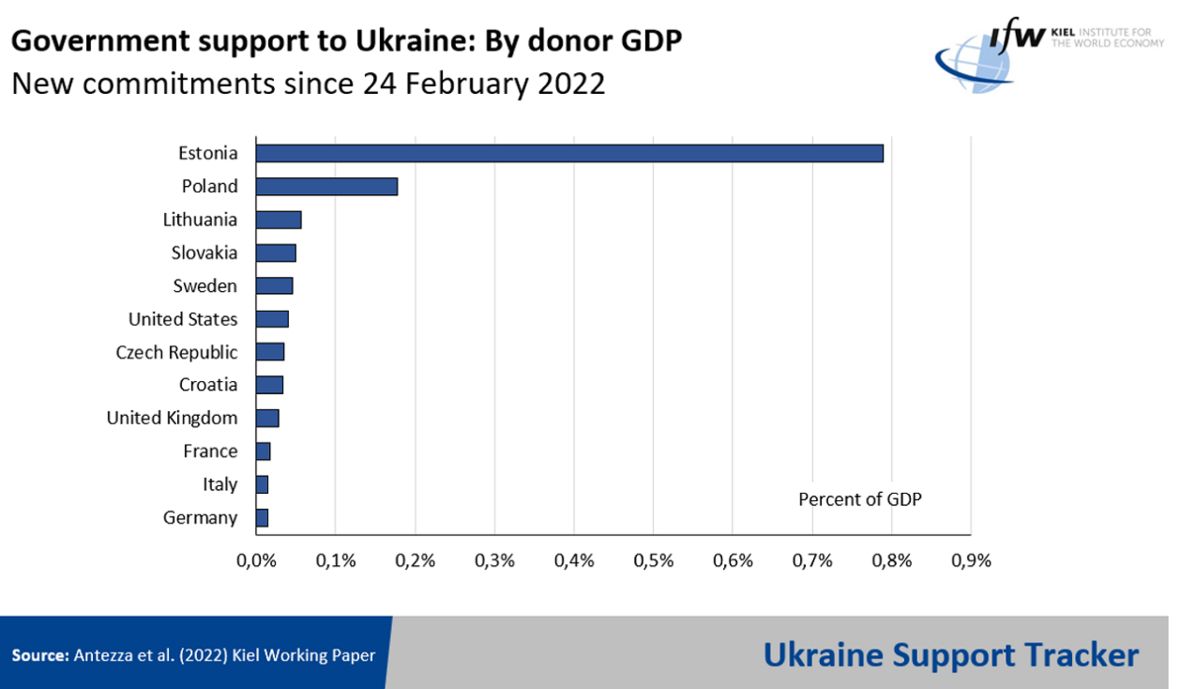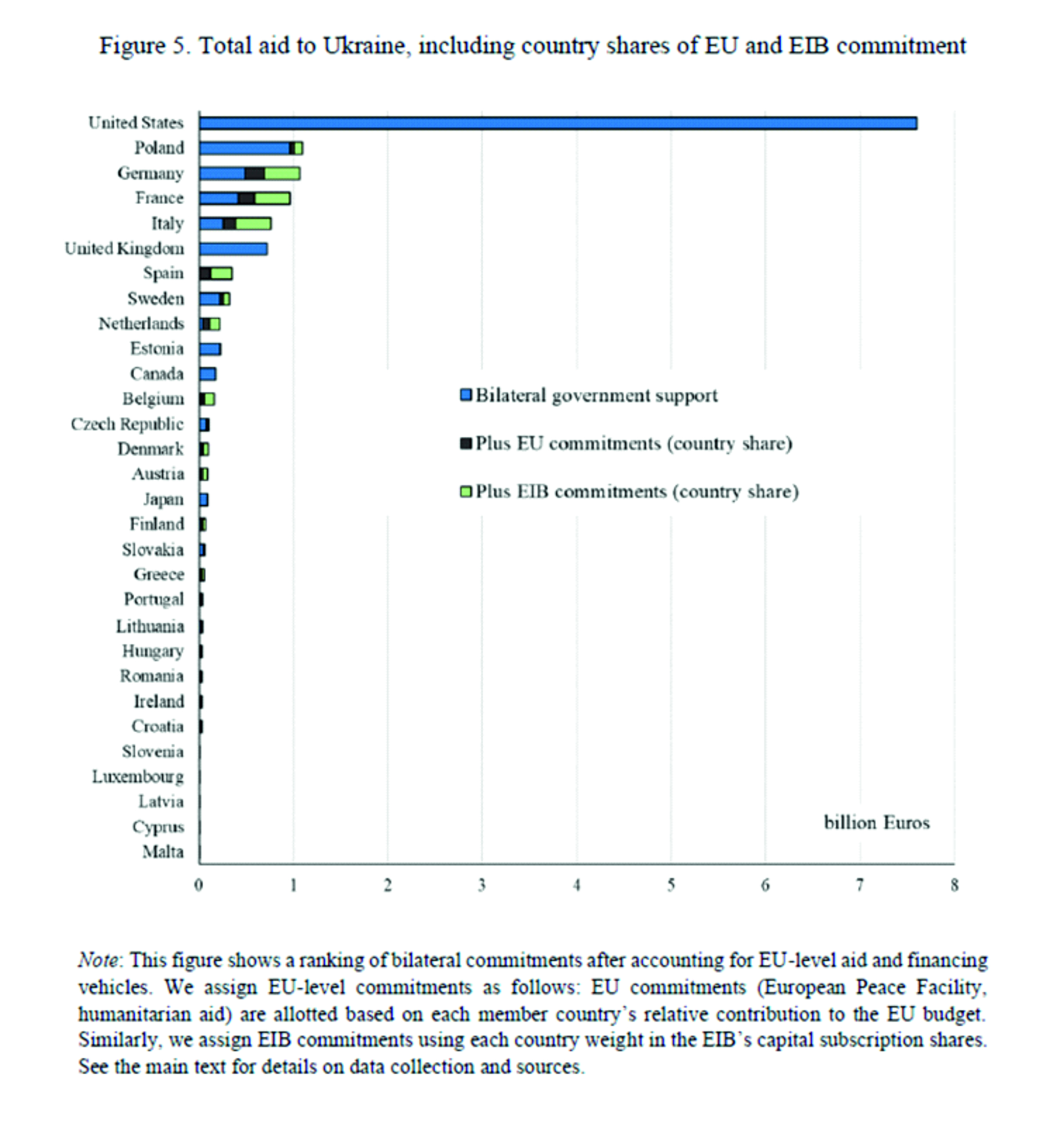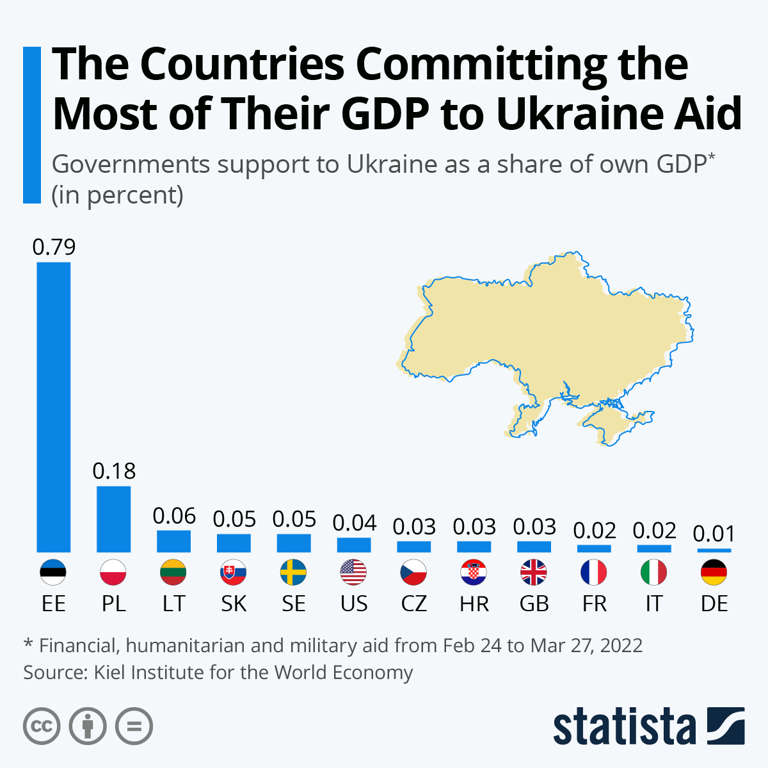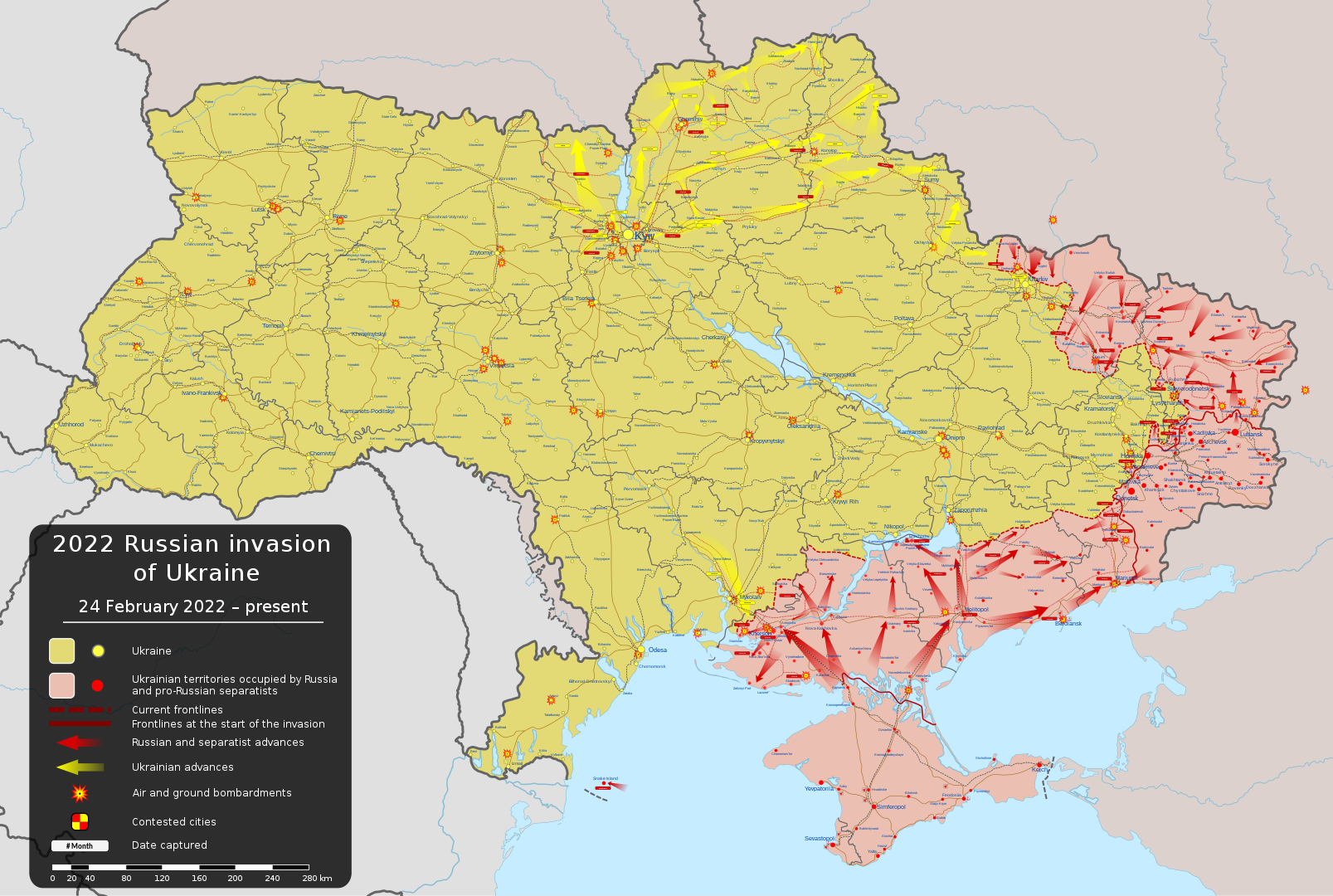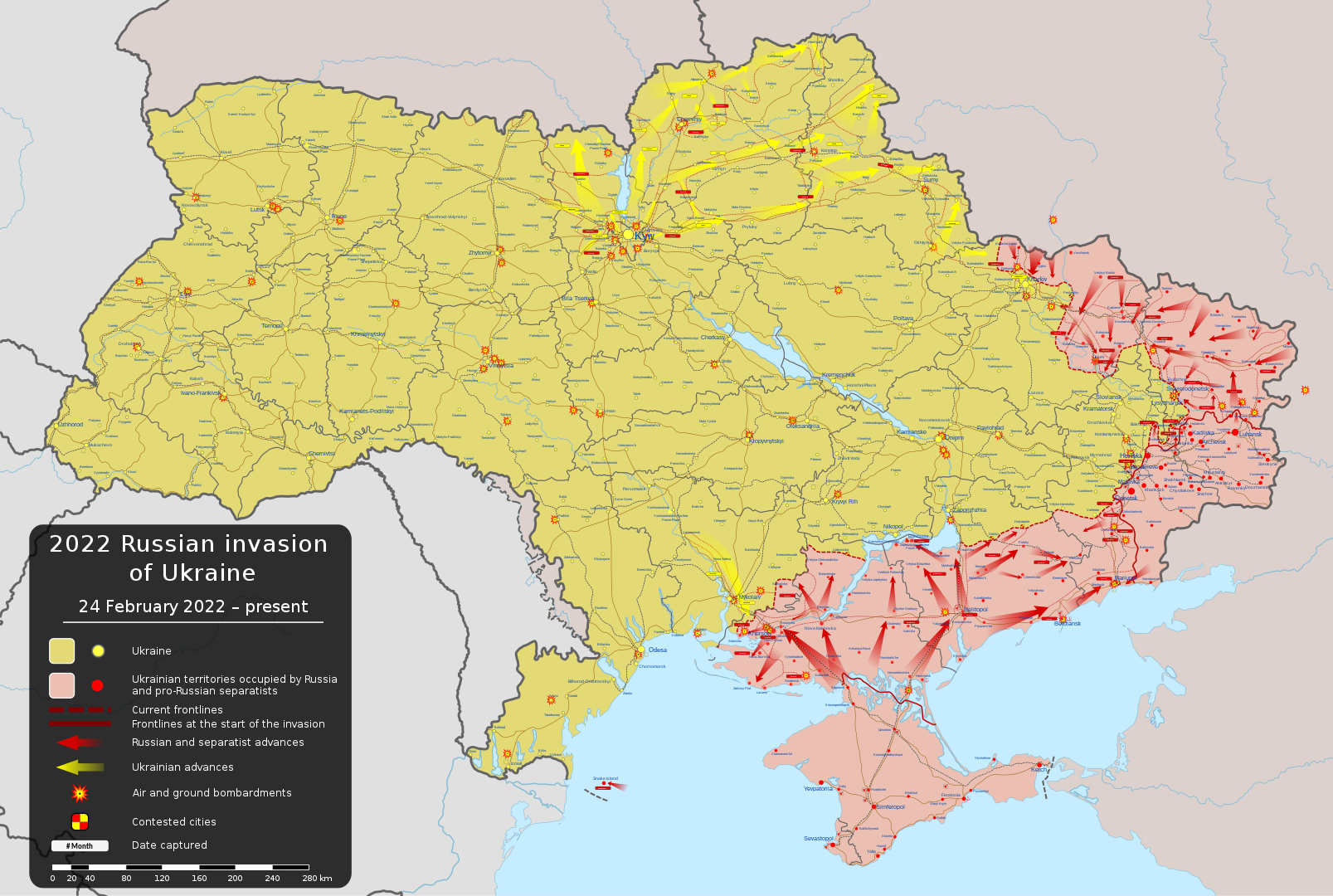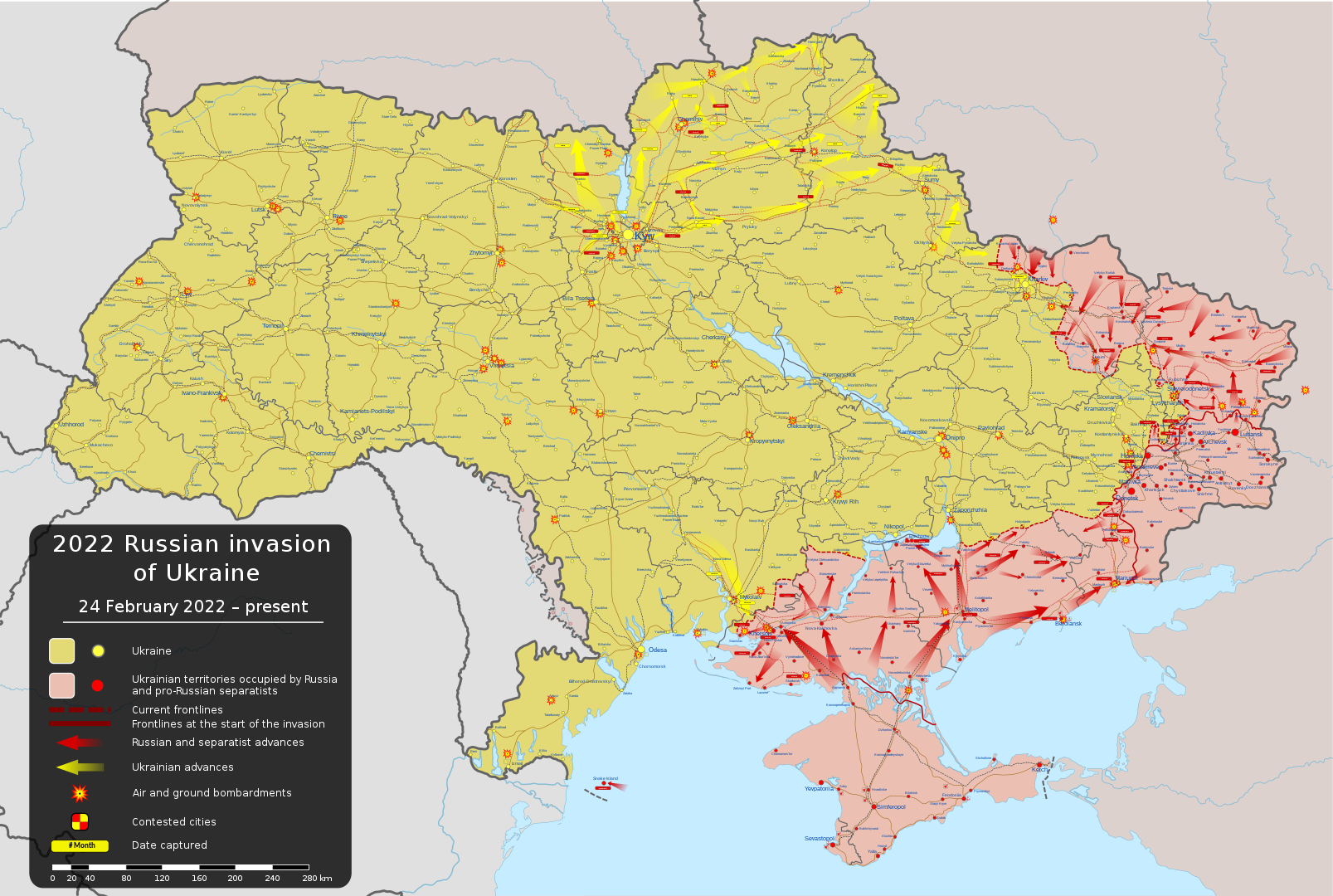
A link to a blow up of the map is here: Wikipedia map
Week nine of the war. It does appear that the war is quiet for the next week or so. It is raining today and tomorrow. A lot of people are announcing that the second phase of the war has begun, but don’t see any major offensives yet. It will probably have to wait until it has stopped raining and the ground has dried.
The fight for the Donbas is developing with the Russians taking Kreminna (pop. 18,417) on 18 April and the Ukrainians taking Maryinka (pop. 9,256) on 19 April. Videos verified by CNN show Russian forces in central Rubizhne (pop. 56,066). It is on the front line, due north of Sievierodonetsk and due east of Kreminna. It does look the Russians are slowly advancing towards Sievierodonetsk from the north. These appear to be preparatory steps ahead of the main offensive.
Russia controls the majority of isolated Mariupol, with maybe a group of over a thousand Ukrainians holding out in a steel mill. Russia appears be unable to finish them off, so not sure how much longer this drags on. Depends on food I guess. They are is not going to be relieved. Ukrainian Army remains over 60 miles away.
This does appear to be the first of several “sieges” in the campaign. Is this the future of the Russian offensive? Is the next offense towards Kharkov; or is it the cities of Siervierdonetsk (pop. 101,135), Lysychansk (pop. 95,031), Sloviansk (pop. 106,972) and Kramatorsk (pop. 150,084) in the Lugansk and Donetsk provinces? Is Russia going to limit themselves to cleaning up the rest of the areas claimed by the LPR and DPR (and then try to negotiate a cease fire), or are they going to strike towards other areas, like Kharkov and Dnipro?
It appears that Kiev, Chernigov, Sumy and the northeast part of Ukraine are secure. Of course, Russia can always reintroduce troops later from Russia or Belarus. The U.S. DOD is reporting that 22 BTGs (Battalion Tactical Groups) are refitting north of Ukraine
Russia continues to occupy three cities, Berdyansk (pop. 107,928), Melitopol (pop. 150,768) and Kherson (pop. 283,649). Russia has taken all of Izium (pop. 45,884) as of 1 April.
I will put any changes/updates since yesterday’s post in italics. I did put this post on a diet.
We are looking at six major areas of operations right now.
1. Kiev – secure
2. Odessa – secure
3. Kharkov
4. The Donetsk and Lugansk provinces – i. e. Sloviansk and Sievierodonetsk
5. Mariupol
6. Crimean border/Kherson
Here is what I have heard/seen from open sources:
1. Kiev (pop: 2,962,180): It appears that Kiev is secure.
2. Odessa (pop: 1,015,826): Appears to be secure. Do not think it is in danger anymore from amphibious invasion. The range of a Ukrainian manufactured Neptune missile is 175 miles (280 kilometers). The distance from Odessa to Sevastopol is 188 miles.
A Russian news agency (RIA) quoting the Russian defense ministry today said that 1 person was killed and 27 were missing from the sunk cruiser Moskva and the remaining 396 crew were evacuated. 396 + 1 + 27 = 424, which is less than the ship’s reported strength of 485 or 510.
3. Kharkov (pop: 1,433,886): Kharkov looks to be securely held but is still being shelled.
The Russians have two options for an encirclement of the Ukrainian areas of Lugansk and Donetsk province. One is the “smaller option” of striking from Kreminna and near Soledar to surround Sieverierodonesk and Lysychansk. The other is a “larger option” to strike from Izium and surround Sloviansk and Kramatorsk also. They may try both. If they are doing that, then I assume options like a renewed assault on Kharkov or a drive towards Dnipro (which is a good distance away) are off the table.
4. The Donetsk and Lugansk provinces: The Donetsk People’s Republic (DPR) is reporting as of 14 April that they had 1,188 soldiers killed and 4,956 wounded (4.17-to-1 wounded-to-killed ratio) out of a supposed strength of 20,000. This is 31% casualties out of an estimated force of 20,000, which is pretty serious. Lugansk People’s Republic (LPR) is reported as of 5 April to have had 500-600 killed.
Zelensky in an interview on CNN on 17 April said they had 44,000 professional military men in the Donbas.
Sievierodonetsk (pop. 101,135) might soon come under assault or possibly siege. It is already in danger of being surrounded, with Russian or DPR forces near Bakhmut (pop. 72,310) and Soledar (pop.10,692) and pushing down from the north from Kreminna and Rubizhne.
The Russian and LPR (Lugansk People’s Republic) have taken Kreminna (pop. 18,417). This village is to the NW of Sievierdonetsk and Lysychansk (pop. 95,031). Videos verified by CNN show Russian forces in central Rubizhne (pop. 56,066). It is on the front line, due north of Sievierodonetsk and due east of Kreminna. It does look the Russians are slowly advancing towards Sievierodonetsk from the north. This metropolitan area has a combined population of around 350,000.
There has been fighting reported around Lozove, Rubtsi, Yatskivka to the east of Izium and at Torske (pop. 1,653) to the west of Kreminna. I gather Torske is contested. The map below shows the operations better than I can.

This map is drawn from the blog Veterans Today, which is reported in Wikipedia as an “American pro-Kremlin and conspiracy theory website”. Wikipedia article is here: Veterans Today – Wikipedia. Soutfront.org, the source of this map, is reported in Wikipedia as a “multiligual website registered in Russia that ‘combines Kremlin talking points with detailed knowledge of military systems and ongoing conflicts…’” See: SouthFront – Wikipedia. These sites should be viewed with considerable caution.
The Veterans’s Today article is here: https://www.veteranstoday.com/2022/04/20/sitrep-operation-z-april-20-2022/?msclkid=780c64ffc23811eca1c90b30393283a1
Sloviansk (pop. 106,972) to its west is also expected to come under assault.
Kramatorsk (pop. 150,084), located just to the south of Sloviansk. It had its rail station hit on 9 April with over 50 civilians killed.
The Ukrainians have retaken Maryinka (pop. 9,256) on 19 April, which had been taken by the DPR on 17 March.
5. Mariupol (pop: 431,859): Day fifty-three of the siege. The defenders appear to still be determinedly holding out in one or two pockets of resistance. There were unconfirmed reports of “phosphorus munitions” being used in Mariupol. Putin has ordered a halt to the assault on the Azovstal steel mill. Not sure what happens next.
The failure of the Russians to complete the conquest of Mariupol is probably due to a shortage of good infantry. If you are going to do urban operations, you need infantry. Otherwise, you are going to have to shell everything to oblivion, which appears to be what they are doing. Following video of street fighting in Mariupol was just released by the Azov Regiment (0:58): https://www.youtube.com/watch?v=Q6UOYKQ8JD8
According to the DOD on 18 April there are almost a dozen BTGs in Mariupol. As each BTG has about 200 infantry, then 11 x 200 gives us 2,200 infantry. They have already probably had heavy infantry losses though, so could have less than half of those troops available.
Not sure what the starting strength was for the Ukrainian defenders at Mariupol. I have seen figures as low as 3,500 defenders, which is really not a lot and I suspect is low. The only two units I have heard of defending Mariupol are the Azov Regiment and the 36th Marine (or Naval Infantry) Brigade, but other units are listed in Wikipedia inside Mariupol (12th Operation Brigade, State Border Guards Service) and other units are listed as involved (10th Assault Brigade, 46th Motorized Brigade, Territorial Defense Forces). The Russian military are now estimating the 2,000 fighters are holding out around the Azovstal steel mill in the city. The Mariupol city council reports more than 1,000 civilians and Ukarinian troops are in the steel mill complex, which covers 4 square miles and includes a network of tunnels. Added to that they reported on 13 April that 1,026 Ukrainian troops of the 36th Marine Brigade surrendered at the Ilyich Iron and Steel Works. See: Ukrainians defy deadline to surrender in Mariupol or die. Parts of the 36th Marine Brigade are still engaged there though, with a major there reporting that had more than 500 wounded fighters. See: Mariupol fighters ‘dying underground’ at steel plant, commander says.
The population of the city is down to 100,000 or less. The mayor, who is no longer in the city, is claiming that that more than 10,000 people have been killed. The head of DPR (Donets People’s Republic) has said over 5,000 people have been killed. The city has been decimated, lots of buildings and houses destroyed. Mariupol has no power, gas or water. The vice-mayor of this city said on 3 March that they can hold out for five days.
If the Russians decided to just pen in the defenders and leave them there, then they have to leave forces, 1,000 or 2,000 or more, to hold them down. So they started with almost a dozen BTGs in Mariupol, probably have to leave a couple behind, have to garrison the area also, and their remaining BTGs have been depleted. So, the forces coming out of Mariupol to rejoin other operations is less than 10 BTGs.
There is a mass grave being reported outside of Mariupol near the town of Manhush. It looks like around 200 graves have been dug. Another mass grave is also being reported on today. So far, they appear to be graves for hundreds of people, vice thousands.
6. Crimea & Kherson (pop: 283,649): Kherson is under Russian control. Are the Ukrainians going to make a push to take back Kherson? There does appear to be a Russian push near Oleksandriivka (pop. 5,095), on the route towards Mykolaiv.
Weather: Kharkov at 6 PM: 61 degrees (16 Celsius) and cloudy. Low tonight 49 degrees (9 Celsius). Rain expected in the evening and forecast for Sunday. Guessing that all major military operations are shut down for a few more days as it takes time for the ground to dry.
Ukrainian Army Build-up: Not sure how large the army now is (assume over 200,000). There is a Ukrainian Territorial Defense Force of 100,000 to 200,000. There are some foreign volunteers (including two Chechen battalions who have been there all along and a Georgian unit). I have yet to any statistics as to how many other foreign volunteers have been deployed, just individual stories.
According to senior U.S. officials, the U.S. and other NATO members have so far sent Ukraine 17,000 AT missiles and 2,000 Stinger AA missiles. The U.S. has promised an additional 9,000 AT missiles and 800 Stinger AA missiles (see below for more details). Czech Republic is providing them with “dozens” of T-72 tanks and BMP-1s. I gather other members of NATO are going to follow shortly. As of 1 Jan 2019, the Czech Army had 86 T-72M1, 30 T-72M4CZ, 145 BVP-1 (BMP-1 variant) and 185 BVP-2 (BMP-1 variant). They had no other tanks in their inventory, so were certainly due for an upgrade.
Slovakia has now donated S-300 air defense missiles to Ukraine. According to Wikipedia, Slovakia had only one battery with up to 45 missiles. In exchange, the U.S. is deploying some Patriots to Slovakia (not that it is under attack). At the start of the war Ukraine had about 100 batteries of S-300s with as many as 300 launchers. They have lost at least 21 launchers according to video evidence. NATO members Bulgaria (4 launchers) and Greece (32 launchers, 175 missiles) also have S-300s.
The U.S. Congress just approved another aid package for Ukraine, this one for $800 million. It includes 18 155mm Howitzers, 11 Mi-17 helicopters, 300 Switchblade drones (in addition to the 100 already committed in Ukraine), 200 M-113 APCs, more Javelin AT missiles, and Claymore directed mines. On March 16 the White House approved 800 Stingers (mentioned above), 2,000 Javelins, 6,000 AT4 AT launchers, 1,000 M-72 LAW, 100 unnamed drones, etc. On 6 April the U.S. announced it was providing $100 worth of Javelins and 100 Switchblade drones. It appears that the U.S. provided 18 155mm Howitzers with their 40,000 rounds are arriving in Eastern Europe ((guessing Poland) and that training of Ukrainian troops with the weapons starts in a few days.
The European Union has also provided another 500 million euros of aid. Total aid provided by the EU since the war began is 1.5 billion euros.
Poland is reported to have provided 100 T-72s with improved IR sights to Ukraine and also some BWP-1 IFVs. The transferred may have occurred a few days ago. It appears that the United States has provided Ukraine with the parts to rebuild 20 Mig-29s from a purchase of 21 Migs that we made from Moldova in 1997 to prevent their procurement at the time by Iran. They were sitting around unused.
President’s Biden speech on 21 April promised another $800 million in military aid to Ukraine, includes 72 155mm howitzers, 144,000 artillery rounds, and 121 Phoenix Ghost tactical drones. Congress does have to approve that, but I am guessing this is not an issue.
Biden stated that Ukraine has a 10-to-1 ratio of anti-tank missiles to Russian tanks. It is reported that the U.S. has provided over 5,500 Javelin AT missiles since the war began. The previous 18 Howitzers promised started arriving on 20 April in Europe. The U.S. is also promising $500 million more in economic assistance in addition to the $1 billion already provided.
Russian Army Build-up: I have yet to see many reports of Russia expanding its army or calling up more reserves and conscripts. Their biannual call-up starts on 1 April, and Putin just signed a decree ordering up 134,500 new conscripts into the army. See the comments in the Day 35 for a discussion on the significance of this. We are now in the eighth week of the war. Are they going to expand their army as Ukraine is clearly expanding theirs, or are they expecting that this war will end shortly? It looks like the Russian Army is adding a couple of thousand volunteers. The U.S. DOD told reporters on 8 April that the Russia could be looking to recruit as many as 60,000 soldiers to join the fight. I don’t know what that really means. Who? From where? What will be their training? How long will it take?
Opposing forces: Ukraine had before the war an army (ground forces) of 169,000 in 2016. The Russian army (not armed forces) was 280,000. The current Ukrainian army is now probably over 200,000. The Russian army (ground forces) in and around Ukraine is probably around 150,000 (up to 190,000). Donetsk PR is estimated at 20,000 and Lugansk at 14,000. Russia may be able to add more forces from their own resources, but not much more. If they want to add more, they are going to have to mobilize. They appear to be hesitant to do so. I suspect with full mobilization; we could be looking at a Ukrainian army larger than 300,000. At some point, Russia will have to mobilize to continue this war.
The Russian Home Front: Count of detained protesters is claimed to be over 14,900 since the war began. See: OVD-info. At least 800 people have been detained in Belarus. There have been only limited protests in the last few weeks.
Exchange rate: The Ruble is at 79.87 to a dollar as of 11:39 AM EST. This is “better” than it was before the war began. We gather the Russian government is propping the ruble up. Not sure what the exchange rate will be if Russia ever opens its stock market.
Price of oil (Brent crude): $106.65 as of 11:40 AM EST. Several years ago, if the price of oil dropped below $80, the Russian budget would go into the red.
Note that Russia says it received $3.6 million less (302 billion rubles) than it forecast from March old and gas sales. Russia forecasted energy revenue of 790 billion rubles ($9.4 billion) but received around 488 billion rubles., a drop of 38%. The last report I saw, 52% of the Russian government revenue comes from oil (even though it makes up only 7% of their economy). The current Wikipedia article on the Russian economy says that roughly 40% of Russian federal budget comes from the oil and gas sector.
It has been estimated by the World Bank that Ukraine’s economy will shrink by an estimated 45.1% this year (which is a surprising precise estimate in the middle of a war).
The value of the ruble seems to have stabilized for the last two weeks at around 82 per dollar and oil prices at around $100-110. Lower oil prices do undercut the Russian government budget. To further lower the oil prices probably requires the corporation of Saudi Arabia and OPEC. Right now, they are steering a neutral course between the U.S. and Russia.
Casualties: The UN is reporting on 22 April 2,435 civilians confirmed dead in the war, 79 are in territory controlled by Russian separatists. Ukraine is claiming more than 10,000 civilians killed in Mariupol alone. Zelensky (President of Ukraine) is reporting on 12 March that around 1,300 Ukrainian soldiers have been killed. Russia claimed by 2 March to have captured 572 soldiers (which is entirely believable). U.S. officials are saying (March 9) that between 2,000 to 4,000 Ukrainian troops have been killed. Zelensky told CNN on 15 April that Ukrainian Army had lost between 2,500-3,000 troops since the fighting has begun and about 10,000 have been wounded (wounded-to-killed ratio of 4.00- or 3.33-to-1). This is the first update on Ukrainian Army losses since 12 March.
Russia reported on 2 March 498 troops have been killed and 1,597 wounded. This is a 3.21-to-1 wounded-to-killed ratio, which seems a little low (see link below). Ukraine is reporting almost 200 Russians captured. The Donetsk People’s Republic (DPR) is reporting as of 14 April that they had 1,188 soldiers killed and 4,956 wounded (4.17-to-1 wounded-to-killed ratio). Lugansk People’s Republic (LPR) is reported as of 5 April to have had 500-600 killed. BBC Russian Service as of 5 April has counted 1,083 confirmed killed, of which 217 are officers. This includes 10 colonels, 20 lieutenant colonels and 31 majors. This is certainly an undercount. The Russian Army stated on March 25 that 1,351 soldiers have been killed and 3,825 wounded. This is a 2.83-to-1 wounded-to-killed ratio, which is still pretty low, but at least is more believable than some other estimates. The Kremlin spokesperson Peskov is now saying “We have significant losses of troops. It’s a huge tragedy for us.” Not sure how to convert “significant losses” into a numerical value.
The Ukrainians are as of 20 March to hold 562 Russian soldiers as prisoners, with 10 previously released in prisoner exchanged for 5 Ukrainian soldiers and the Mayor of Melitopol. Subsequent exchanges have released 96 Russian soldiers and 11 Russian civilians, in exchange for 96 Ukrainian soldiers and 19 Ukrainian civilian sailors. Prisoner exchanges from 9, 14, 19 and 21 April released 104 Ukrainian soldiers and officers and 47 civilians. The number of Russians released in these exchanges has not been provided, but the exchanges are probably one-for-one. The prisoner exchange on 15 April released 5 Ukrainian soldiers for four Russian soldiers. Total released is now 210 Ukrainian soldiers and 67 civilians.
U.S. officials are claiming figures between 3,000 to 10,000 Russian soldiers killed (March 18). In the past they have claimed 3,000 captured. NATO is claiming 7,000 to 15,000 killed (March 23). There was a report briefly released last month of 9,861 Russians killed and 16,153 wounded (1.64-to-1 wounded-to-killed ratio). I seriously question that report (see my posts on the subject of 22 and 24 March).
A post was made 21 April to a Russian news site that reported “irretrievable losses” in Ukraine were 13,414 soldiers, of which more than 7,000 were missing. As “irretrievable losses” means killed, possibly died of wounds (DOW) and missing, this would imply that Russian killed is 6,414 or less. It was quickly deleted, and the news site claimed it was hacked. Some media has reported the post as over 13,000 killed and over 7,000 missing, but “irretrievable losses” usually includes missing. The post also stated that the cruiser Moskva had 116 killed and more than 100 missing. A Russian news agency (RIA) quoting the Russian defense ministry today said that 1 person was killed and 27 were missing. The claim of 7,000 Russian soldiers missing is hard to match with Ukrainian reports of hundreds captured. During our capture rate studies (see: http://www.dupuyinstitute.org/tdipub3.htm) it appeared that during the German offensive in July 1943 to the south of Kursk, that around 75% of the Russians reported missing were captured by the Germans. I am assuming that if Russia has 7,000 missing, then Ukraine has thousands of prisoners. That does not appear to be the case.
A total of seven Russian generals have been killed. The previously reported death of Lt. Gen. Yakov Rezanstev of the 49th Combined Arms Army (age 49) has still not been confirmed. Ukrainian “sources” estimate that around 20 major generals have been deployed to the Ukrainian front.
During World War II the United States lost 11 generals killed in action. Germany lost 135 and had 84 executed. See: A List of American Commanders in WWII Who Lost Their Lives (warfarehistorynetwork.com). The U.S. lost six generals killed in action in Vietnam: Last US general killed in combat was in Vietnam in 1970
Russian Equipment Losses: @oryxspioenko is reporting the following Russian losses based upon his analysis of pictures and videos. Russian equipment losses are here: https://www.oryxspioenkop.com/2022/02/attack-on-europe-documenting-equipment.html
0900, 30 March 0800, 13 April 0900, 21 April
Tanks: 336 485 517
AFVs: 239 258 312
IFVs: 320 516 556
APCs: 79 95 99
Jet aircraft: 15 18 21
Helicopters: 32 30 33
The Ukranian Ministry of Defense is claiming as of 29 March they have destroyed 597 tanks, 1,710 armored personnel vehicles, 127 aircraft and 129 helicopters. They also claim 17,200 Russian soldiers killed. They claimed as of 13 April they have destroyed 739 tanks, 1,964 armored personnel vehicles, 158 aircraft and 143 helicopters. They also claim 19,800 Russian soldiers killed. These figures look to be inflated, especially the aircraft and helicopter claims. We assume personnel claims are also inflated.
Ukrainian Equipment Losses: @oryxspioenko now has a separate listing for Ukrainian losses based upon his analysis of pictures and videos. It is here: https://www.oryxspioenkop.com/2022/02/attack-on-europe-documenting-ukrainian.html?msclkid=a374718dc17511ecb7fe354e35b82b28
0900, 30 March 0800, 13 April 0900. 21 April
Tanks: 79 107 130
AFVs: 62 73 79
IFVs: 60 82 88
APCs: 29 39 51
Jet aircraft: 10 13 14
Helicopters: 1 3 5
Have no idea how accurate this count really is (the Ukrainian losses seem low), but I figure it is probably the best count publicly available.
It is clear that more than 10,000 people have died in this conflict (1,351 (Russian Army) + at least 2,000 more (Russian Army) + 3,000 (Ukrainian Army) + 2,435 (Civilians) + 1,188 (DPR) + 600 (LPR) = 10,574). It is probably in excess of 12,000 total deaths depending on Russian military deaths and the real count of civilian losses. The number of deaths of Mariupol are unverified and unknown.
If Ukrainian military deaths are between 2,500 and 3,000, then I assume Russian military deaths are at least as many. Ukraine is claiming as of 19 April that 20,800 Russian and DPR soldiers have been killed, Russians are claiming as of 16 April that 23,367 Ukrainian soldiers have been killed. Are both sets of figures similarly inflated?
The Russian claims are also very nebulous with lots of people hanging onto a figure of 10,000 or 15,000 or 20,000 killed. There are reasons to doubt these high claims. It is clear the Russian military deaths are 3,000 killed or higher.
Both sides have claimed a similar number of troops captured (572 Ukrainians captured by 2 March vs 572 Russians captured by 20 March).
There are people doing a more detailed job of tracking losses on Twitter, including @RALee85 and @Oryxspioenkop and @caucasuswar, none of whom are known to me. One of them appears to have accepted the claims of at least 10,000 Russian soldiers killed.
Air Power: The Pentagon on 12 March is reporting that Russia is flying about 200 sorties a day. The Ukrainian air force has 56 operational jets flying 5 to 10 hours a day. March 22 it was reported by the U.S. that Russia flew more than 300 sorties into Ukraine. March 24 it was reported that more than 250 Russian sorties were flown, mostly around Kiev and Kharkov.
Missile Defense: According to Zelenskyy the missile barrage near Lvov on 12 March consisted of 30 missiles, 8 missiles that landed and 22 missiles that were intercepted and shot down. On the morning of 16 April in the Lvov region, Ukraine claimed it downed four cruise missiles fired by Su-35s operating from Belarus.
End of the War: Putin has declared that the peace talks are at a “dead end.” Not sure if that is a negotiating tactic and a new determination to drag a victory out of an otherwise not particularly successful war. I lean towards to the latter.
Now, I did not expect any serious progress on negotiations until after they took Mariupol. It is still hanging on. On the other hand, it does look like they intend to take and hold onto all of Donetsk and Lugansk provinces, and possibly all of Kherson province and four-fifths of Zaporizhzhia province. The capital Zaporizhzhia (pop. 722,713) may not be on their list of areas to take. So, four out of Ukraine’s 24 provinces and Crimea.
Populations of partly or completely occupied areas (2019 estimates):
Donetsk: 4,165,901
Lugansk: 2,151,833
Crimea: 2,033,700 (2001 census)
Zaporizhzhia: 1,705,836
Kherson: 1,037,640
Sevastopol: 509,992 (2021 estimate)
Population of Ukraine (excluding Crimea), 2022 estimate: 41,167,336
What they are willing to later negotiate away to achieve peace or a ceasefire is unknown. When they are ready to return to talks is unknown. This is beginning to look like an extended war.
Atrocities: The stories coming out of Bucha are pretty appalling. At least seven civilians have been reported killed in incidents not related to combat, 18 civilians were found dead in a basement, and another 20 civilians were found lying dead in the street, two with hands bound. The mayor of Bucha says they were executed. There are other claims scattered about Ukraine. How extensive and widespread this is still not certain, but this appears to be well beyond what one would expect from “collateral damage” from combat, and some appears to be deliberate. It does indicate, as a minimum, a lack of military discipline in some Russian units. This story is continually being updated right now. The latest figure (12 April) is that 403 civilians were killed in Bucha. The deputy mayor of Bucha says that 50 of the victims have been confirmed as extrajudicially executed. Additional reports from Ukraine have put the body count of civilians found in the towns and villages surround Kiev at 1,222. This has not been independently confirmed.
There is also a video out there of Ukrainian soldiers shooting several Russian prisoners in their legs. There is a second video showing Ukrainian troops executing what appears to be four Russian prisoners seven miles SW of Bucha. See: https://news.yahoo.com/video-appears-show-ukrainian-soldiers-192219323.html. More detailed description from BBC: https://www.bbc.com/news/61025388. It is on youtube, if you want to look it up. I believe they are members of the Georgian Legion, a group of Georgian volunteers fighting for Ukraine.
Other Issues: Azerbaijani troops have occupied an area in Nagorno-Karabakh that they are claiming is theirs. The Russian peacekeeping troops there have not expelled them.
Finland and Sweden are seriously discussing joining NATO later this year. Finland is further along in this discussion than Sweden. I assume NATO will welcome them with open arms.
Ukraine may be on the fast track to join the European Union (which was the issue that started all the turmoil in 2013).
The Map: The attached map is from Wikipedia. It is dated 23 April. Maryinka is not shown on this map. There appears to be no changes to this map in the last two days.




